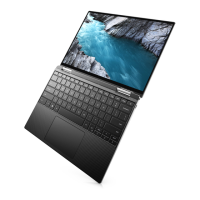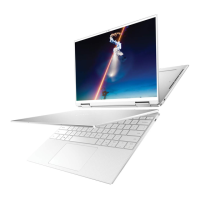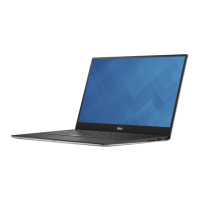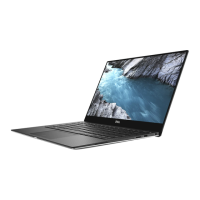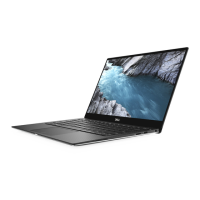Table 5. System setup options—Storage menu (continued)
Storage
Default: RAID on. Storage device is configured to support RAID functions with
VMD Controller. When enabled, all NVMe and SATA devices will be mapped under
the VMD controller. Windows RST (Intel® Rapid Storage Technology) driver or
Linux kernel VMD driver must be loaded in order to boot the OS.
Storage Interface Displays the information of various onboard drives.
Port Enablement Enables or disables the M.2 PCIe SSD.
Default: ON
Drive Information Displays the information of onboard drives.
SMART Reporting Sends analytical information from integrated drives and notifications during
startup about potential failure of the hard drive to the BIOS. Controls whether
hard drive errors for integrated drives are reported during system startup.
This technology is part of the SMART (Self-Monitoring Analysis and Reporting
Technology) specification
Default: OFF
Table 6. System setup options—Display menu
Display
Display Brightness
Brightness on battery power Sets the screen brightness when the computer is running on battery power.
Default: 50
Brightness on AC power Sets the screen brightness when the computer is running on AC power.
Default: 100
Touchscreen
Touchscreen Enables or disables the touchscreen.
Default: ON
Full Screen Logo
Full Screen Logo Enabled or disabled the computer to display full screen logo if the image match
screen resolution.
Default: OFF
Table 7. System setup options—Connection menu
Connection
Wireless Device Enable
WLAN Enable or disable internal WLAN connections.
By default, WLAN is selected.
Bluetooth Enable or disable Bluetooth connections.
By default, Bluetooth is selected.
Contactless Smart NFC Enable or disable internal Contactless Smart NFC connections.
By default, Contactless Smart NFC is selected.
Enable UEFI Network Stack
Enable UEFI Network Stack Enables, selectively enables or disables UEFI Network Stack.
System setup 19

